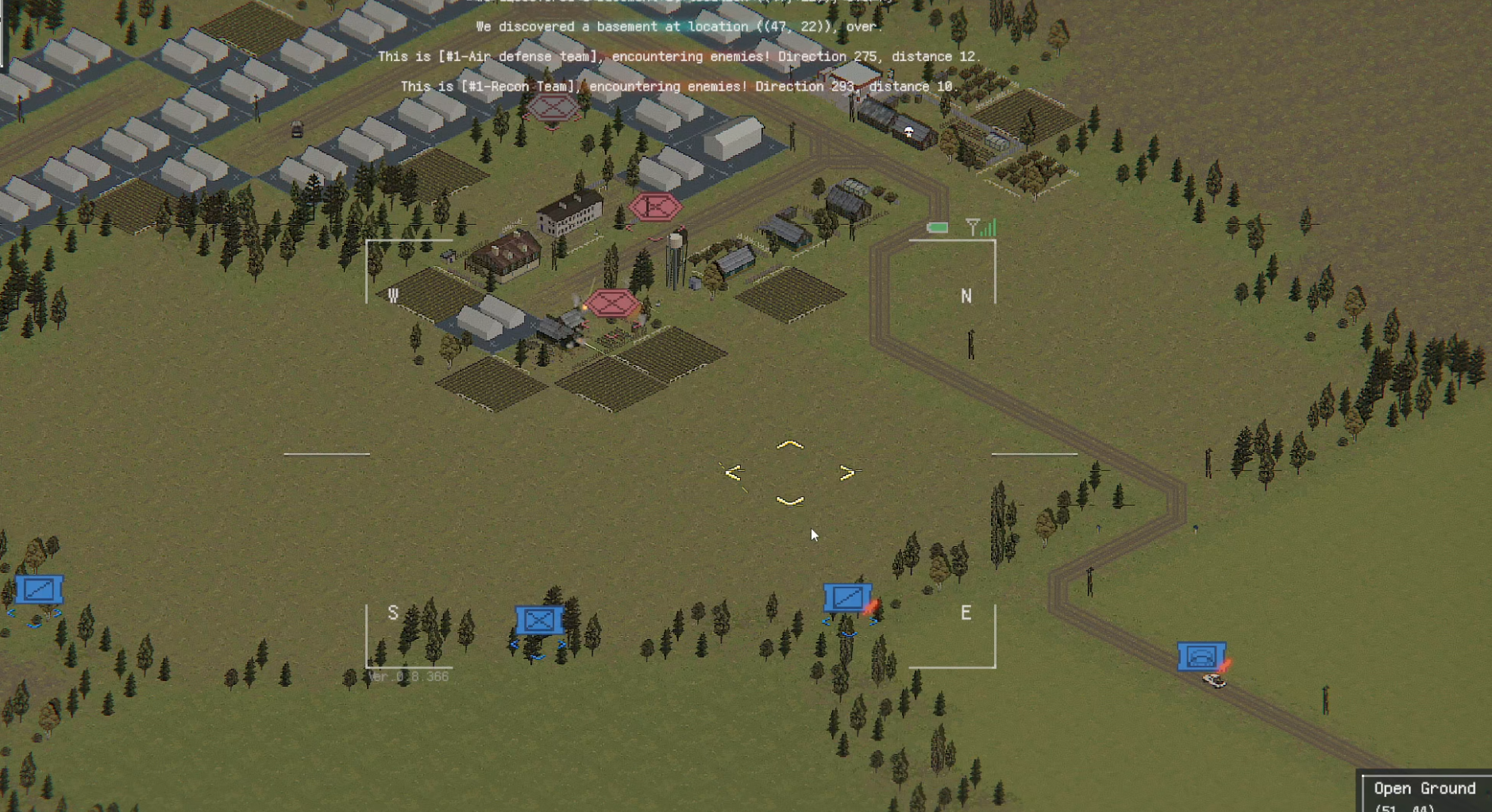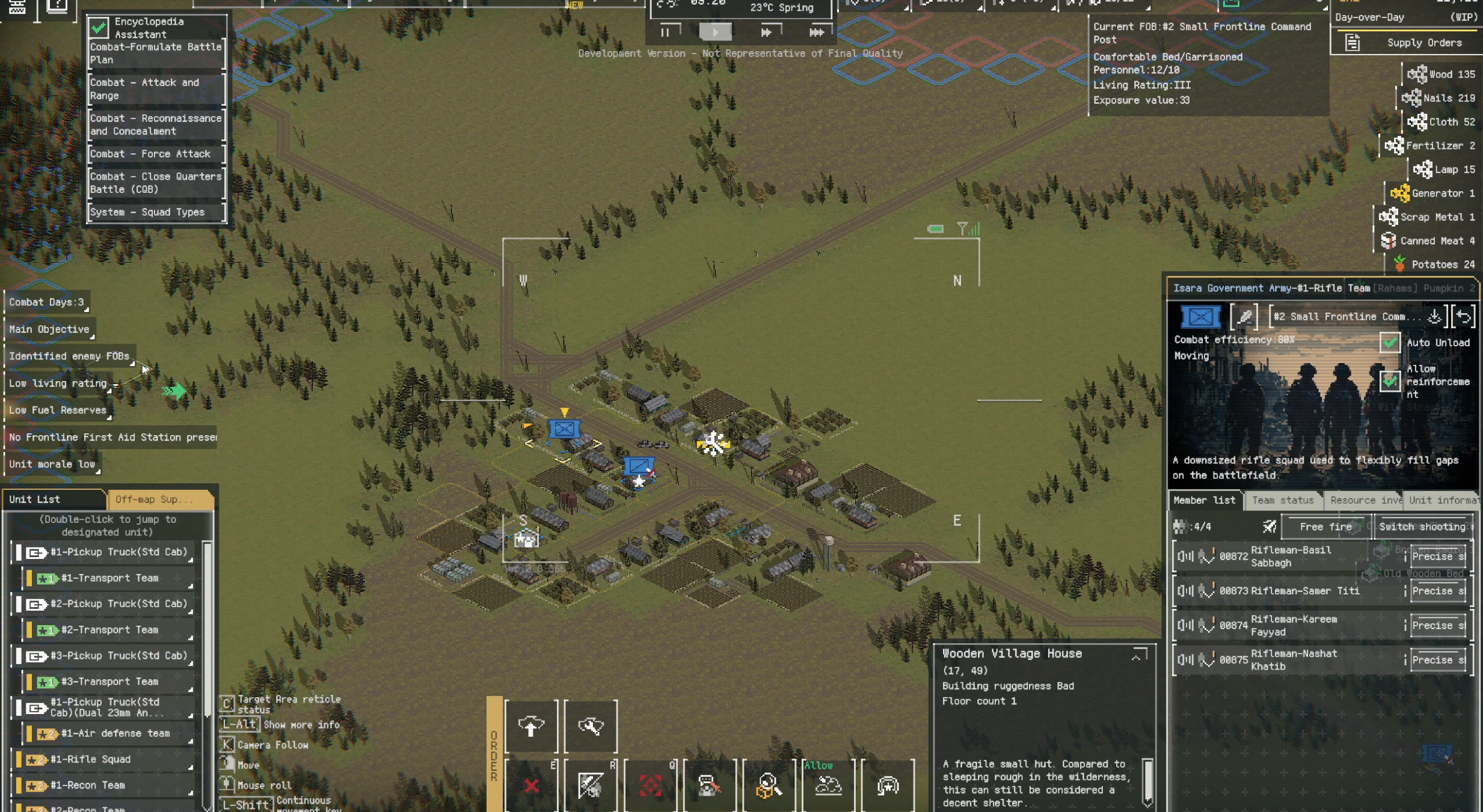This Pixel War Game Is a Brutal Lesson in Military Logistics - Frontline Logistics: Isarian Warfare
When a game lands on my radar that's less about flashy kills and more about the grind behind war, I perk up. Enter Frontline Logistics: Isarian Warfare — a game that takes the often‑ignored backbone of warfare — logistics, attrition, supply chains — and puts it front and center. This game is very unique, and deserves attention for how much “stuff” it shows you really need to fight a war.
You might also be interested in:
Frontline Logistics: Isarian Warfare still has a good combat system, but that feels more like just an excuse for logistics.
What is Frontline Logistics: Isarian Warfare?
Let’s set the stage:
The game is marked for release in Q1 2026 on Steam.
It’s described as a tactical survival + outpost management sim driven by dynamic battlefield events.
The theme: war isn’t just bullets and explosions; it’s the daily grind of keeping men alive, supplied, housed, armed.
The demo is free (as of this writing) and lets you tinker with what the full game promises.
The Vibe
Imagine you’re trying to recreate the static but hellish frontline warfare — something akin to the 2022 conflict in Ukraine (pre‑ubiquitous drones) — where it’s less about flashy breakthroughs and more about inching forward, holding ground, doing the dirty work of war. That’s what this feels like. It’s not “charge in with tanks and guns”; it’s “set up your forward operating base in an abandoned village, move supplies, feed your troops, while bullets fly overhead”.
What Makes It Different
Here are some of the standout mechanics and design choices that set FLIW apart:
Logistics as the core: Ammo needs to be driven to the front; field kitchens cook hot meals; injured soldiers undergo surgery then evacuation. This level of detail in logistics is rare.
Frontline living matters: Troop comfort, rations, morale—they matter. A hungry, cold, unsupported squad is less effective.
Forward operating bases (FOBs): You’ll set up FOBs in abandoned villages or war‑torn towns, scavenge materials, build infrastructures, maintain supply chains.
Tactical attrition & positional warfare: The game emphasises slow, costly advances. The enemy will reinforce, you will dig in, adjust, supply and re‑supply.
Pixel art + destructible structures: Though the art is deceptively simple (pixel art style), the game handles destruction and modular building collapse.
My Experience With the Demo
I played the demo and here are my personal take‑aways:
The tutorial isn’t the smoothest ride. You’ll spend more time figuring out how to do things than executing glamorous attacks.
Once you get units moving, telling squads what to do, the feeling becomes immediately punishing. You invest time in setting up logistics… then watch men die or get suppressed by modern firearms. It’s harsh, but in a fitting way. If your guys are caught out of position they will not last long.
Combat is “pretty alright”, but not the star. Suppression fire to dominate before moving into mop‑up mode—it’s well done, but the meat of the game is behind the scenes: the supply lines, the back‑of‑house work.
There were bugs. For example: my logistics units refused to scavenge buildings or deliver supplies on loading a save. That’s early access/demo stuff.
Even so: the concept is strong. The look is charming. The demo already offers a unique simulation experience for those willing to learn.
Frontline Logistics: Isarian Warfare is pretty tough to understand at first.
Where It Could Improve
Here are a few things I hope the full release addresses or enhances:
More tutorial clarity or user‑interface polish would help reduce initial frustration.
More assets: more variety in buildings, units, terrain so the “logistics ballet” stays fresh.
Bug fixes and performance tuning (especially for late‑stage operations where things get complex).
Potentially more depth in combat (or at least more tools) to reward logistics success with satisfying frontline breakthroughs.
Who Is This For?
If you…
enjoy simulation and management games (especially war‑themed ones)
like slowing down, thinking, optimising supply chains and bases
don’t mind a learning curve and fewer “action blockbuster moments”
Then this game will absolutely appeal. If you’re after high‑octane, reflex‑based tactics, maybe less so. But front‑line logistic warfare? That’s a niche Frontline Logistics: Isarian Warfare nails.
Should You Try It?
Yes — if you’re intrigued by the concept. The free demo is enough to get a feel for the game, the unique vibe, the complexity. It’s an attention‑grabber.
Pro tip: give yourself time. Don’t expect to “win” quickly. Expect to set up your supply lines, brace for attrition, dig in.
Conclusion
Frontline Logistics: Isarian Warfare is a bold take on war simulation. It flips the script: logistics, attrition, supply, comfort, survival—these aren’t ancillary, they are the war. It may not have the glam of tank charges and explosive set‑pieces, but it has a gritty honesty about what sustained warfare really demands. I think the developer is onto something fantastic here. If you are curious, give the demo a go. It’s one of those unusual games that scratch a very specific itch—and I’m glad it exists.
You might also be interested in:



